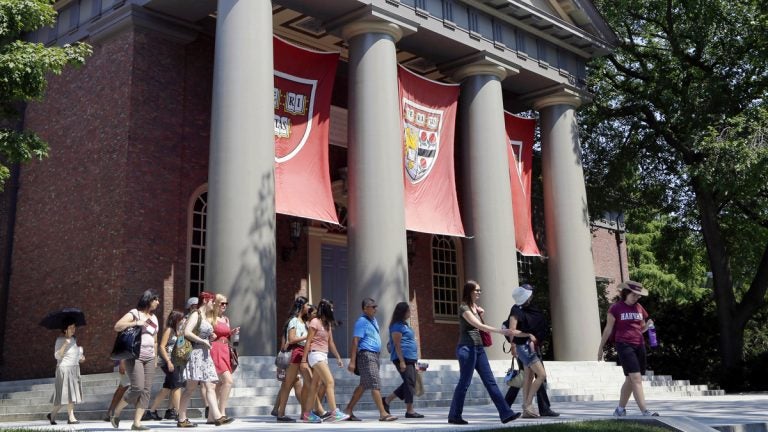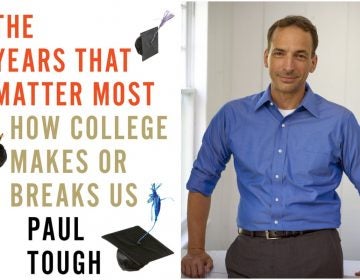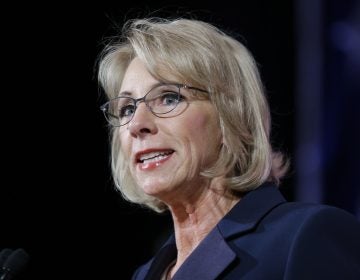Inclusive admission won’t hurt white students, but it will make your university better
Students of color have earned the right to be on any campus they set foot on, and their colleges and universities are better off for having them.

A tour group is shown walking through the campus of Harvard University in Cambridge, Mass. Word of an August 2017 Justice Department inquiry into how race factors into admissions at Harvard University has left top-tier colleges bracing for scrutiny of practices that have boosted diversity levels to new highs. (AP Photo/Elise Amendola, File)
In the national consciousness, affirmative action has come to mean that people of color are given a competitive advantage over whites who are more deserving. From personal experience and research, I have learned this is simply not true. Students of color have earned the right to be on any campus they set foot on, and their colleges and universities are better off for having them. Yet, the ways that we continue to discuss race remain limited to the experience of people of color and not how institutional systems are predominantly structured to benefit those from already privileged backgrounds.
In college, I remember sitting in the auditorium during freshman orientation and hearing a university official brag about the incoming class. As he rattled off their impressive academic achievements, I found myself sinking deeper into my seat and not identifying with any of them. From there things only got worse. My first semester was filled with fear and self doubt, which materialized in my grades. I went from being an A student at Central High School to hovering between a B- and C + at the George Washington University. I worked day and night to read more than I ever had and completed all my assignments on time. But even that seemed not to be enough to be a top student.
My paranoia became real during a visit to my writing professor’s office hours. He said, “You write like you are high school, and if I were your teacher there, I would fail you.”
His words were cruel and signaled that he thought that I didn’t deserve to be there. Never mind that his words actually indicated his inadequacy as a professor and that, in fact, he did not belong on campus if he could not mentor and support his students. Yet I used his criticism to prove to him and myself that I belonged there. The next semester I buckled down even more. I pulled countless all-nighters that involved consuming many grande vanilla cappuccinos and Haribo gummy bears. The process was torturous, but I went from having a GPA below 3.0 to making the dean’s list. My freshman year was a struggle, but it taught me getting in was an important part — but only part — of the college process.
The singular focus on the point of admission is misleading on many fronts. First, it presents college admissions as a zero-sum game: Among highly selective colleges and universities, the admission of one student means the rejection of another. Many white students think they are losing something that is rightfully theirs to students of color — even though students of color continue to be underrepresented and the use of race-conscious policies has declined at selective universities over the last two decades. Moreover, these attacks rest upon a faulty assumption that test scores are an accurate depiction of academic success, which is not true. Nonetheless, this does not mean that students of color have a free ride. What you are given is opportunity. It only becomes advantageous through hard work.
Second, the real beneficiaries of more diverse campuses are not students of color alone, but the university as an institution itself. I did not need to look like everyone else or have the same set of experiences. I used my own background and upbringing to offer counter-examples in classroom discussions and to create new student programming for underserved populations. In this way, my collegiate experience aligns with a wide range of research that has shown the benefits of more racially and economically diverse student populations for the student body at large and the university.
For example, while opponents of affirmative action advocate for merit-based admission, Scott Page, a social scientist at the University of Michigan, has written that “diversity merits equal standing with ability, and that sometimes, although not every time, it evens trumps ability.” In his book, “The Difference,” he demonstrates that diverse perspectives give individuals more tools to approach problem solving, which often results in more productivity and innovation. In this way, diverse representation is essential for producing well-equipped students of all backgrounds.
To be sure, I do not know how much my racial identity figured into my admission to college. However, social scientific research demonstrates that racial privilege often works in the opposite way. Critics of affirmative action and policies that promote greater racial diversity miss how many existing policies disproportionately benefit white students. For example, children of alumni, who are predominately white, receive far more favorable treatment in admissions than students of color.
In fact, many of the policies that we consider today as promoting meritocracy have racially exclusionary roots. For instance, in the 1920s, elite universities like Harvard and Yale moved from evaluating students solely on academic criteria to considering more intangible features like character. Features that we consider essential for providing a more holistic portrait of a student’s ambition and promise, like personal interviews, letters of recommendations, and extracurricular activities, were originally intended to provide admission officials with more latitude to screen out undesirable students, most notably Jewish students. So, when the president argues that it is white students who are discriminated against in college admissions, it’s clear he is attempting to use the power of the federal government to make affirmative action white again.
The fight to make our colleges and universities reflect the racial and ethnic diversity of our country is worth it. We often think the goal of attending college is to get a good job, but a more latent function is to produce citizens. Our democracy is strengthened with expanded opportunity and more culturally and politically aware students. Now as a university professor and researcher, I see college differently than how I did as a student. In the classroom, I aim to harness the dividends of diversity to promote critical thinking and civic engagement. Our unstable and contentious political climate suggests that we need more spaces for these types of conversations, not fewer.
WHYY is your source for fact-based, in-depth journalism and information. As a nonprofit organization, we rely on financial support from readers like you. Please give today.




